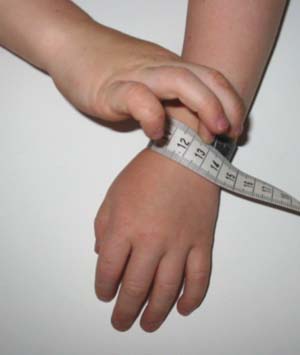Plants Spread Germs Too!
Hello,
This Kids Science Newsletter includes news about weather in Europe causing some birds including puffins to starve to death. In our fun science activity you will be measuring your hands, feet and other parts of your body using a metric ruler, meter stick or tape measure.
Question of the Month
Who invented cheese?
(answer follows the simple science experiment)
Science Current Events
- Plants Spread Germs Too!
- Plant and animal diseases are possibly spread by flowering plants. Researchers have been studying bees and fly that they spread diseases among plants and animals as they gather nectar. This is similar to people that are sick allow germs to circulate among a large number of people as they move through busy airports and shopping malls, etc. Researchers are studying how plant and animal diseases can be spread as plant nectar is collected by insects moving from plant to plant.
- Storms Keep Birds from Feeding in Britain and France
- Storms that caused the top few meters of the ocean to churn up during storms in France caused over 11,000 puffins to starve to death. Normally they sit on the sea and dive for food. The churning water did not allow them to eat during the storms. Nearly constant storms in southern Britain have also killed a number of seabirds because they could not find enough food to eat.
- Ancient
Crystal Found
- The oldest known zircon crystal was recently unearthed in Western Australia. The crystal is important because there is evidence that when the crystal formed there was water on the Earth. At the time the crystal formed scientist had though the Earth did not have any water on its surface.
- Smog in China
- China has frequent outbreaks of toxic air pollution that is so bad that the health of citizens living in Beijing is affected. The weather has been so bad that there has been a ban on barbecues, fireworks and demolition work. The government did not ban the use of cars and trucks during the hazardous smog that gripped the city.
Science Trivia
- Movement defines what an animal is. Creatures travel to find food and shelter and avoid predators. Most land animals, from bugs to bears use their legs for moving or locamotion. Burrowing animals use various methods of movement. Moles shovel soil using their powerful front legs. Earthworms contract their muscles to make their bodies hard so they can force their way between grains of soil.
- Though human noses have 5 million olfactory cells with which to smell sheepdogs have a lot more. Sheepdogs have 220 million olfactory cells to smell which means they can smell 44 times better than a human.
- Someone bought a pizza topped with 24 karat gold for more than $4,000.
- Air masses are huge masses of air which are warm, cold, dry or moist depending upon whether they form in tropical or polar regions, or over the land or the sea. They form in the huge air permanent high pressure areas near the poles and in the tropics.
Simple Science Activity
Metric Measurements
Introduction
This fun activity is designed to measure various parts of your body using metric units. It will help you to understand when to measure in centimeters and meters. You can also see how easy it is to convent from centimeters to meters.

Materials
- Metric tape measure
- Metric ruler
- Meter stick
- Paper
- Pencil
- Notebook (optional)
Directions
- Two people should work together on this project.
- Write on a piece of paper My Metric Measurements
- List the items you want to measure on a piece of paper.
- Suggestions are shown in the picture above.
- Each person should have their own list.
- One person takes the measurements and the other person records their own measurements in either centimeters or meters.
- Change centimeters to meters by moving the decimal point to the left two places. ( 3 centimeters = .03
- When you are finished you might put the information into a notebook and every six months or a year you could remeasure yourself to see how much you have grown.
Things you can measure with a tape measure, ruler or meter stick
- Circumference of your head
- Circumference of your right hand
- Circumference of your upper arm
- Circumference of your neck
- Circumference of your wrist
- Circumference of your wrist
- Length of your arm span
- Length of a regular step
Science behind the experiment
Many parents record their children's height as they grow. This activity increased a child's understand of metric units plus showing them how their whole body is growing.
Answer to the question of the month
Who invented cheese?
Cheese is an ancient food that experts believe was first eaten by people living in the Middle East. The Sumerians were a people with a thriving cilization 6000 years ago lived in the area that is now Iraq. A summerian who raised cows, goats or sheep probably made the first cheese by accident. When milk sours it separates. The liquid in the milk separates and becomes whey. The solids in the sour milk clump together forming curds.
The curds are packed together and can be aged as cheese. The Sumerians probably made the first cheese and are thought to be the world's first cheese lovers.
Links to our back issues of Kids Science Newsletter
Our Other Websites
Ring of Fire Science
Science Kits for Kids
Kids Earth Science
Please share this newsletter with a friend by forwarding it to them. If you know of a group who might enjoy the newsletter please let them know about it also.
Comments? Ideas? Feedback? I'd love to hear from you. Just reply to this Just For Kids Science Newsletter and tell me what you think!
Sincerely yours,
Myrna Martin

